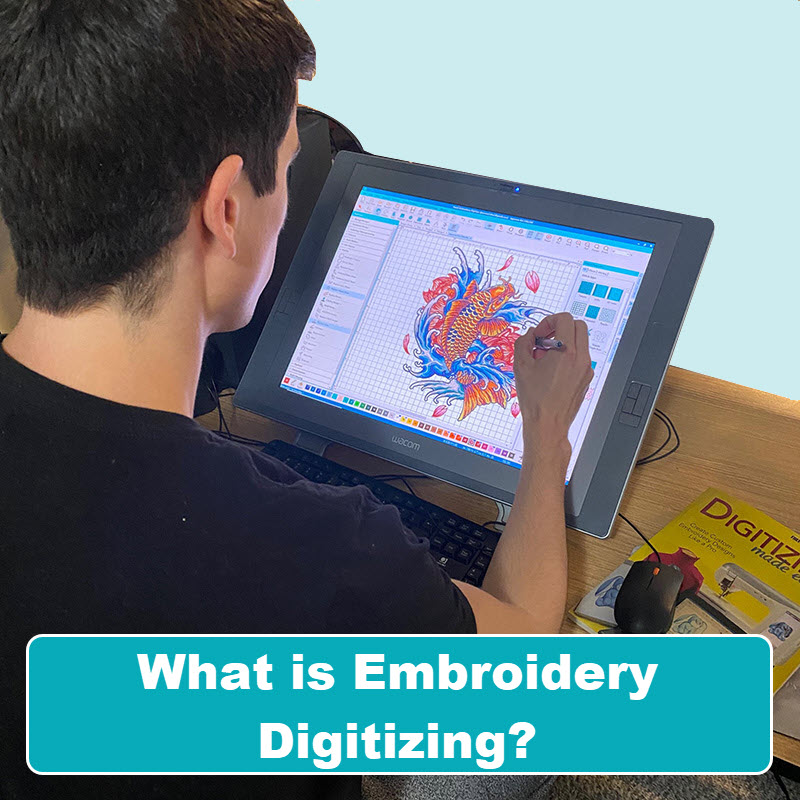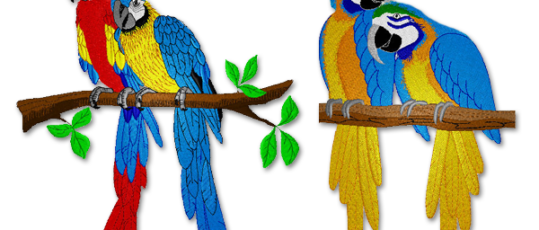Simplifying the Art of Embroidery Digitizing: Step-by-Step Guide
Embroidery digitizing is a thorough craft that requires precision and creativity. As technology remains to advance, the digitization procedure has actually become much more obtainable, allowing enthusiasts to bring their intricate layouts to life easily. In this guide, we will unravel the intricacies of needlework digitizing, damaging down each action methodically to streamline the process and encourage both newbies and skilled embroiderers alike. Remain tuned to discover exactly how you can simplify this detailed art kind and change your innovative visions into wonderfully stitched work of arts.
Comprehending Needlework Digitizing Software
Embroidery digitizing software functions as an important tool for transforming elaborate designs right into electronic layouts suitable with needlework devices, helping with exact sewing and personalization. This specific software program enables users to import numerous photo data formats, such as JPG or PNG, and transform them into needlework machine-readable layouts like DST, EXP, or PES - Digitizing for Embroidery. By utilizing functions like stitch editing, rug options, and thread color selection, digitizing software program allows users to manage every aspect of the layout procedure
Additionally, progressed needlework digitizing software application provides tools for producing complex layouts, readjusting stitch density, and including complex details. Customers can likewise sneak peek the style prior to sewing it out, guaranteeing accuracy and lessening mistakes. Furthermore, several software programs provide automated functions that aid enhance the digitizing process, conserving time and initiative.
Recognizing the capabilities of embroidery digitizing software is crucial for attaining top quality cause needlework tasks. By understanding this tool, embroidery lovers and specialists can release their creativity and bring detailed styles to life with accuracy and efficiency.

Choosing the Right Design Data
After acquainting on your own with the capabilities of embroidery digitizing software application, the following crucial action in the procedure is selecting the best style data for your project. Digitizing for Embroidery. When choosing a layout documents for embroidery digitizing, it's vital to think about the complexity of the layout, the size of the final product, and the kind of material you will be dealing with
For complex styles with great information, a high-resolution picture or vector file is advised to make certain that the needlework maker can accurately reproduce the layout. Furthermore, the size of the end product plays a significant role in selecting the right design documents. Larger designs may call for greater resolution data to keep quality and sharpness.
Moreover, the kind of textile you will be stitching on influences the option of layout file. Various materials might call for modifications in the design data to make certain that the stitches are correctly straightened and the design looks like intended. By meticulously selecting the ideal design data based upon these elements, you can set on your own up for an effective embroidery digitizing procedure.
Digitizing Devices and Methods
Making use of specialized software program and accuracy methods, digitizing tools are vital in transforming elaborate designs right into embroidery-ready data. Embroidery digitizing software, such as Wilcom, Hatch, or browse around this web-site Embrilliance, gives the essential platform to transform art work right into stitch information. These programs offer functions like stitch editing and enhancing, rug options, and text tools to make certain the style translates flawlessly onto textile.
Among the essential techniques in digitizing is creating a clear course for the needlework equipment to adhere to. This includes digitizing each aspect of the style with precision, figuring out stitch types, densities, and directions. By using tools like digitizing tablet computers or software-specific plugins, embroiderers can attain a high degree of precision in their digitized designs.
Additionally, understanding the art of padding stitching is essential for producing top quality embroidery. Underlay sewing supports the material and creates a structure for the layout, making sure that the last product is both aesthetically attractive and resilient. By understanding these you could look here digitizing devices and methods, embroiderers can raise their craft and bring intricate layouts to life with precision and efficiency.
Tailoring Stitch Kinds and Directions
Having actually developed a foundation in digitizing devices and methods, an essential element beforehand needlework workmanship hinges on customizing stitch kinds and instructions with accuracy and function. The choice of stitch types can considerably impact the overall look and structure of the embroidered layout. Satin stitches, recognized for their smooth and glossy finish, work well for creating boundaries and message. On the other hand, fill stitches are perfect for covering larger areas efficiently. By strategically integrating these stitch types, embroiderers can accomplish depth and measurement in their styles.
Moreover, the direction of stitches plays a crucial function in boosting the visual allure of the final needlework. Varying stitch instructions can add structure, emphasize certain elements, and create aesthetic rate of interest. Changing the angle of stitches can mimic motion or all-natural patterns like fur or plumes. By explore different stitch angles and patterns, embroiderers can bring their styles to life with impressive detail and intricacy. Grasping the art of customizing stitch kinds and directions equips embroiderers to release their creativity and raise the high quality of their job.
Testing and Refining Your Digitized Design
To ensure the visit this page accuracy and quality of your digitized layout, comprehensive testing and refinement are important steps in the embroidery digitizing procedure. When you have actually completed the digitization of your style, it is vital to test it prior to proceeding with the actual embroidery. Testing enables you to determine any prospective problems such as thread breaks, stitch thickness troubles, or style distortions that may influence the last result.

After testing, it is essential to refine your digitized design based upon the comments from the test sew-out. This may entail tweaking sew setups, adjusting thickness, or making modifications to the general design to attain the wanted result. By iterating via screening and refinement, you can fine-tune your digitized layout to perfection prior to moving on with the actual needlework process.
Conclusion
To conclude, understanding the art of needlework digitizing needs a detailed understanding of the software program, choosing the right layout data, utilizing digitizing devices and techniques, tailoring stitch types and directions, and screening and fine-tuning the digitized design. By adhering to these steps, embroiderers can streamline the digitizing process and develop premium embroidered styles with accuracy and effectiveness.